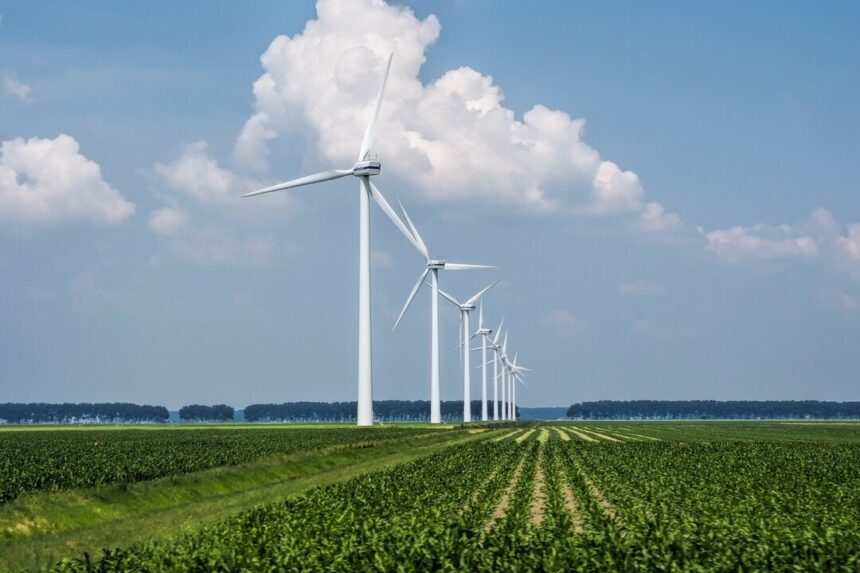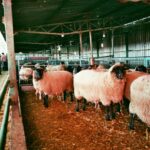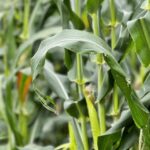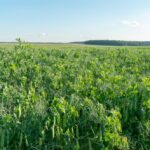As the demand for sustainable agricultural practices grows, green energy-powered farms have emerged as an innovative solution to reduce reliance on fossil fuels while cutting costs and preserving the environment. Solar and wind energy, two of the most accessible and renewable energy sources, can power farm operations efficiently and sustainably. Here is a comprehensive guide to building a farm powered by solar and wind energy.
Step 1: Assess Your Energy Needs
The first step in transitioning to renewable energy is understanding your farm’s energy requirements. Take inventory of the equipment and systems that require electricity, such as irrigation pumps, lighting, refrigeration, and machinery. Calculate the average daily and peak energy consumption. This data will help you determine the size and capacity of the solar panels and wind turbines needed for your farm.
Step 2: Evaluate Your Location
Solar and wind energy systems are highly dependent on location. Conduct a site assessment to determine the availability of sunlight and wind. For solar energy, assess the amount of sunlight your farm receives throughout the year. A location with unobstructed access to sunlight is ideal. For wind energy, measure the average wind speed and consistency. Areas with an average wind speed of at least 10-12 mph are suitable for wind turbines.
Step 3: Design Your Renewable Energy System
Once you’ve gathered data on your energy needs and location, design a system that integrates solar and wind energy. Combining both sources ensures a steady energy supply, as solar panels generate electricity during the day, while wind turbines can operate during cloudy days or at night.
- Solar Panels: Install photovoltaic (PV) solar panels in open areas or rooftops with maximum sun exposure. The number of panels will depend on your energy needs and the panels’ efficiency.
- Wind Turbines: Choose wind turbines appropriate for your farm’s scale. Small to medium-sized turbines are suitable for most farms. Install them in areas with minimal obstructions to optimize wind flow.
Step 4: Install Energy Storage Systems
Energy storage is essential to ensure a consistent power supply during periods of low sunlight or wind. Battery systems can store excess energy generated during peak production times. Modern lithium-ion batteries are efficient and durable, making them an ideal choice for farms.
Step 5: Integrate with Existing Systems
Connect the renewable energy systems to your farm’s electrical infrastructure. You may need inverters to convert the direct current (DC) generated by solar panels and wind turbines into alternating current (AC) for use with standard farm equipment. Consult with a professional to ensure safe and efficient integration.
Step 6: Consider Backup Options
While renewable energy systems are reliable, weather conditions can sometimes limit their output. To ensure uninterrupted power, consider installing a backup generator or maintaining a connection to the local power grid.
Step 7: Monitor and Maintain Your Systems
Regular maintenance is crucial for the longevity and efficiency of your renewable energy systems. Clean the solar panels periodically to remove dirt and debris that may reduce efficiency. Inspect wind turbines for wear and tear, especially the blades and mechanical components. Use monitoring software to track energy production and consumption in real time.
Step 8: Leverage Incentives and Grants
Many governments and organizations offer incentives, grants, and tax credits for adopting renewable energy. Research available programs in your region to reduce initial investment costs. These financial incentives can significantly offset the expenses of installing solar panels and wind turbines.
Benefits of a Green Energy-Powered Farm
Building a farm powered by solar and wind energy offers numerous benefits:
- Cost Savings: Lower energy bills and reduced reliance on fossil fuels.
- Environmental Impact: Minimized greenhouse gas emissions and a smaller carbon footprint.
- Energy Independence: Less dependence on external energy sources.
- Increased Sustainability: Supporting global efforts to combat climate change.
Transitioning to a green energy-powered farm using solar and wind equipment is an investment in sustainability and long-term profitability. By assessing your energy needs, designing an efficient system, and leveraging renewable resources, you can create a farm that not only thrives economically but also contributes to environmental conservation. With the right planning and implementation, renewable energy can transform your farm into a model of modern, sustainable agriculture.
Join 'Farmers Mag' WhatsApp Channel
Get the latest Farming news and tips delivered straight to your WhatsApp
CLICK HERE TO JOIN






